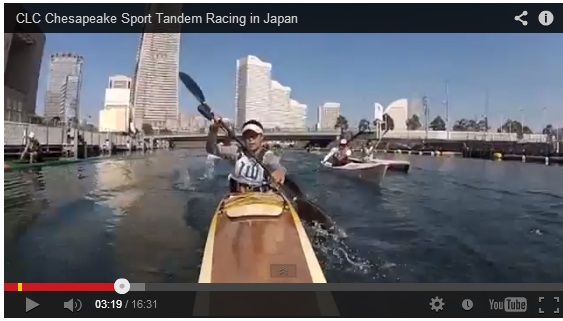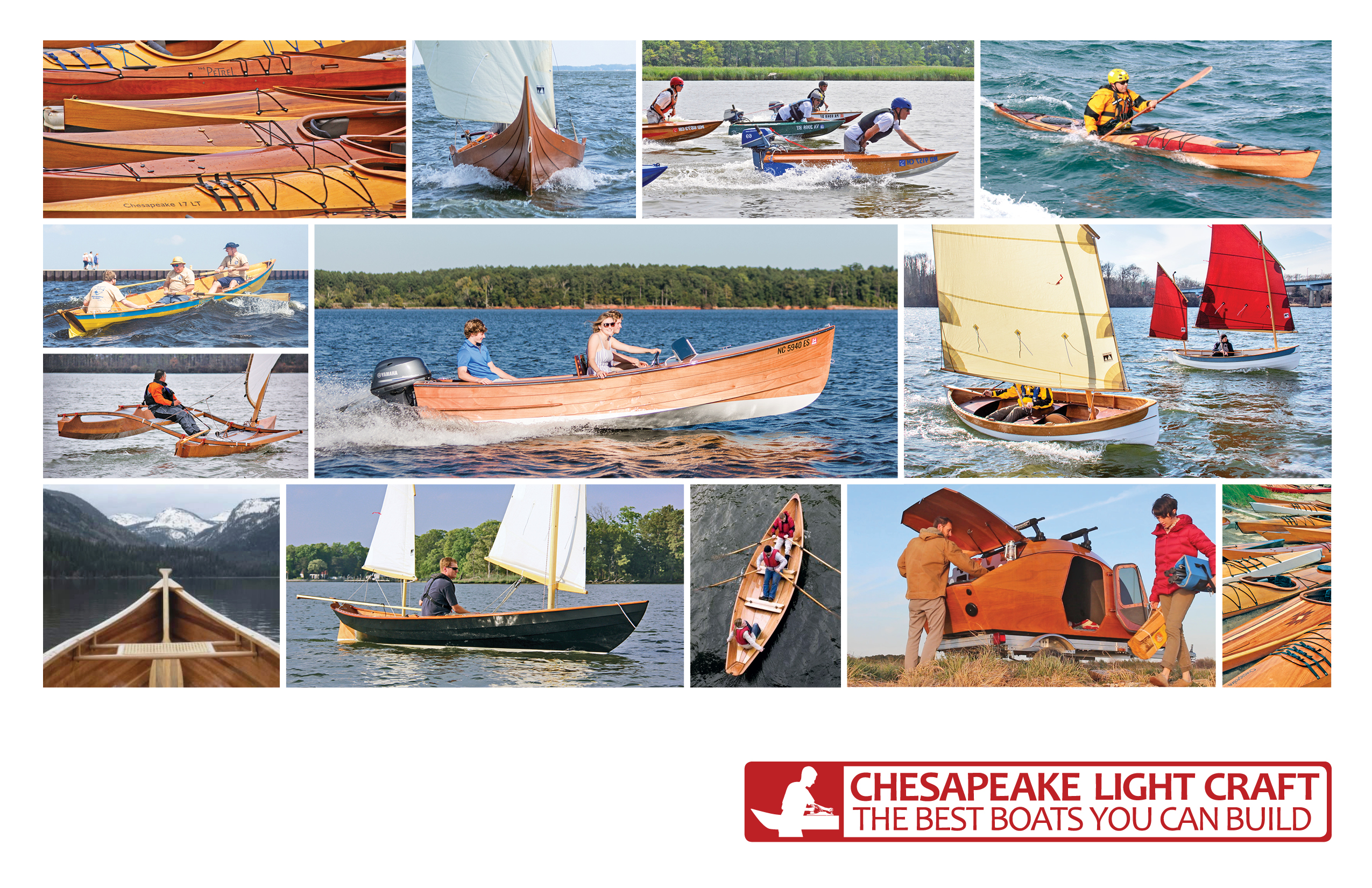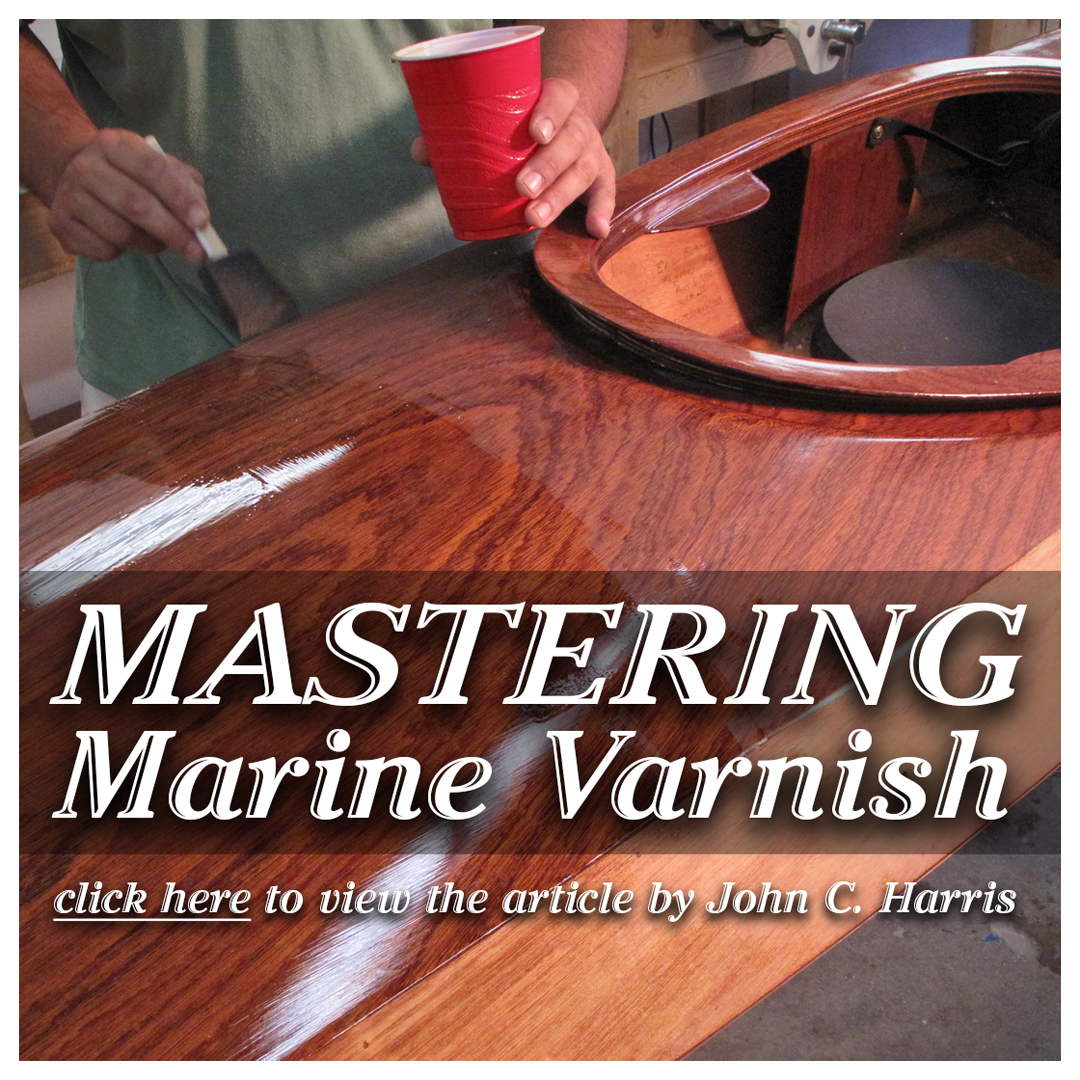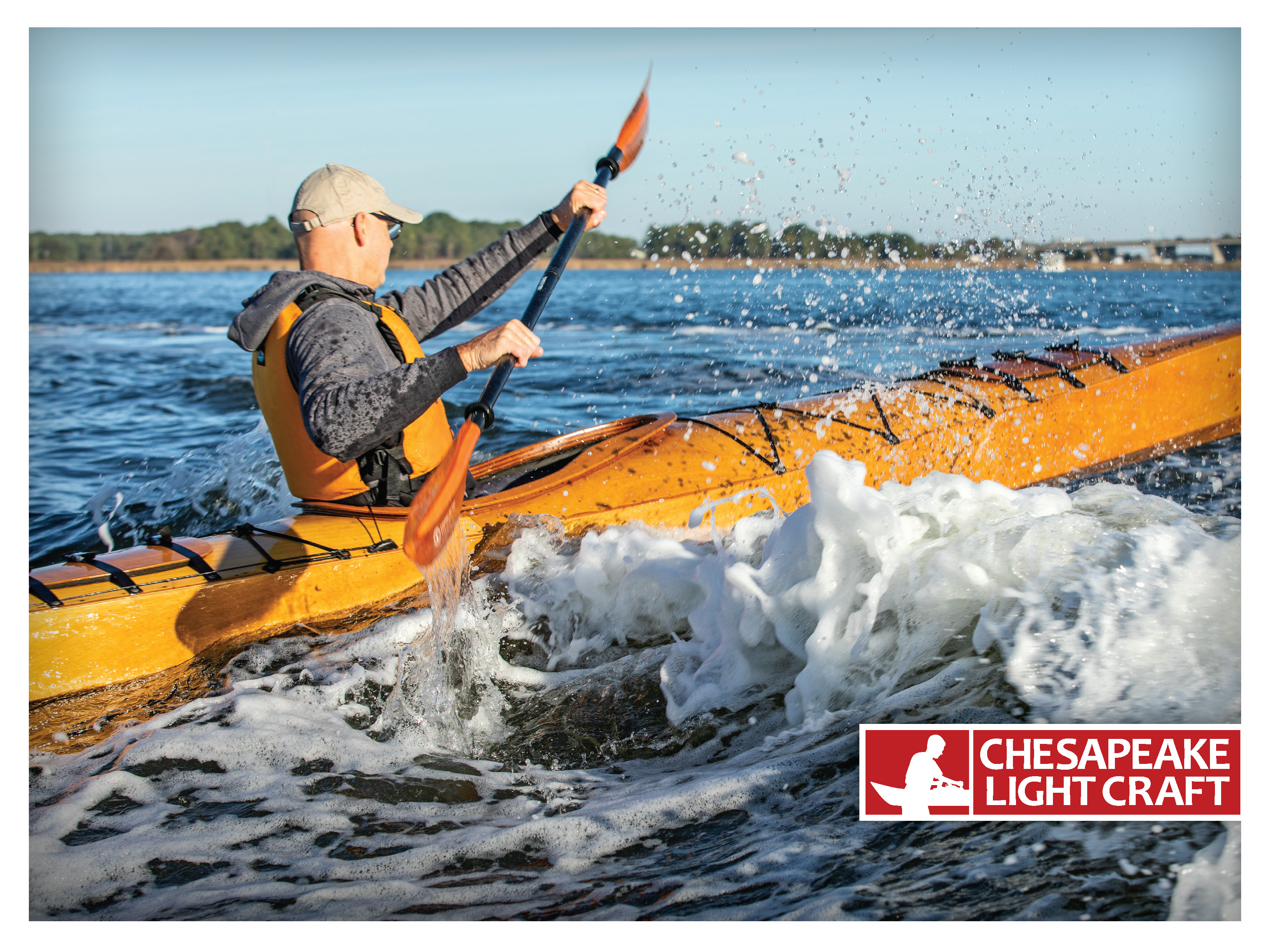"Imagine a race across the entire state of Missouri, just you and your boat thrown against 340 miles of wind, heat, bugs and rain. This ain’t no mama’s boy float trip. This race promises to test your mettle from the first stroke in Kansas City to the last gasp in St. Charles. Just entering it will impress your friends. Finishing it will astound them…"
So begins the official description of the MR340, a Missouri River endurance race beginning at the Missouri-Kansas border and finishing near St. Louis.
 Last July, Mark and Nancy Fish of Ellisville, MO, just outside St. Louis, read a newspaper article about the 2012 MR340. The article captured their attention and kindled a year-long adventure that began with a lot of careful research and ended about 10 a.m. on Friday, July 26, 2013, when the duo crossed the finish line at St. Charles, fifth in their 24-boat class, in the Chesapeake Sport Tandem they built specifically for the race.
Last July, Mark and Nancy Fish of Ellisville, MO, just outside St. Louis, read a newspaper article about the 2012 MR340. The article captured their attention and kindled a year-long adventure that began with a lot of careful research and ended about 10 a.m. on Friday, July 26, 2013, when the duo crossed the finish line at St. Charles, fifth in their 24-boat class, in the Chesapeake Sport Tandem they built specifically for the race.
For the veteran marathoners, hikers, climbers, and bikers with some kayaking experience thrown into the mix, the event was immediately appealing. “We’ve done other kinds of adventure expeditions including biking across Iowa, which takes a week,” Mark said. “We like to do these kinds of long challenges.”
The Fish family already owned a tandem kayak – of the plastic variety. Mark and Nancy knew that it was too wide and heavy to be suitable for serious racing, so they began researching to find the least expensive way to obtain a fast, lightweight boat that would be good for the challenge. After a lot of looking around, they settled on the Chesapeake Sport Tandem, put in their kit order in December, and began assembling in January.
“That made me really happy, because it was also realizing my dream of building my own boat,” said Mark. “We were undertaking something we didn’t know we could do, not just the race, but building the boat was maybe a little above our expertise, too.”
In fact, building the boat proved quite manageable, and the gleaming result with dark red accents was finished in mid-May. After a test launch in a nearby lake, they were ready to try it on a small local river – not quite the Mighty Missouri – on Memorial Day Weekend. There they had the good fortune to meet a veteran of the MR340 who quickly took the couple under her wing, helping them with training and getting set up for the race.
“The Chesapeake is built for speed, but the tippiness scared me at first,” Mark said. “But when we finally got onto the River, we realized how nice it was, and the more we trained, the more confident we got. We learned to manage the currents and the boils where the river water bursts upward and is very confused, and the eddies.”
Then, after months of planning, training, and thinking about it, it was time to start.
“This race isn’t just about how fast you paddle,” Mark explained. “It’s about how many stops you make. You’re racing, sure, but it’s really about what happens on the sidelines.”
 There are nine mandatory check points, and each is open only for a set time period, so if a racer chooses to stop at one of these and sleep, it can be very difficult to reach the next required checkpoint within the allowed time, Mark explained. One of the keys to their success in the MR340 was to push on well beyond the required check points to a farther spot before calling it a day, he said.
There are nine mandatory check points, and each is open only for a set time period, so if a racer chooses to stop at one of these and sleep, it can be very difficult to reach the next required checkpoint within the allowed time, Mark explained. One of the keys to their success in the MR340 was to push on well beyond the required check points to a farther spot before calling it a day, he said.
The race is always scheduled to coincide with a full moon, to make night paddling safer and easier, and the river was considerably lower than it had been on some of their earlier training runs, so the projecting stone wing dikes controlling the river flow were fully exposed and visible, making them somewhat less dangerous. Still, Mark and Nancy did a little more sleeping than paddling at night, camping in their SUV with their shore support crew.
Staying on the river after dark had pluses and minuses. “The water was more smooth and it was cooler,” Mark said. But then there were the dense clouds of newly hatched insects to pass through as the bugs rose up off the water in thick swarms, something the paddlers found very unpleasant.

The first two days, Mark and Nancy made more than 100 miles progress each day, paddling from just before dawn well into the evening with periodic breaks ashore at the checkpoints and for occasional meal and rest breaks. They completed about 90 miles on the third day before stopping for the final night at Washington, MO. “We were tired, and it was hot and humid,” Mark explained. They also had a rendezvous with their race guru, who thoughtfully brought them pizza and beer for sustenance and encouragement.
More importantly, though, he and Nancy also hoped for a mental and emotional boost by setting off for the final day’s run from a spot they had used for training. “We felt like we were in our own back yard,” Mark said, “like we were just doing 40 miles instead of finishing 340 miles.”
 The couple’s original plan was to finish the race around noon on Friday, July 26, after three and a half days on the river. “When we decided to stop at Washington, we knew it would be six hours from there to the finish,” Mark explained. “We decided to start at around 4 a.m. so we could finish about 10.”
The couple’s original plan was to finish the race around noon on Friday, July 26, after three and a half days on the river. “When we decided to stop at Washington, we knew it would be six hours from there to the finish,” Mark explained. “We decided to start at around 4 a.m. so we could finish about 10.”
Once the initial “speed demons” had passed them by on the first day, Mark said, the sight of other contestants on the water was rare, though they were able to pass nearly everyone they met on the river after that. “We had seen a couple of other teams at the checkpoints,” Mark said, “but not really so many on the water.” Then, as they came to within three or four miles of the finish, “We saw a boat ahead of us, and saw it was a tandem canoe, so we said, ‘Let’s chase them down.’”
Chase them down they did, making the extra effort only to discover that the canoe’s crew were both men, so they were not in the same class. Still, it was satisfying to be able to catch and pass another team in the final stretch of the race.
Then, Mark, said, “All hell broke loose on the river.” As they approached the finish area, heavy spectator boat traffic all around churned up disorganized waves and made the going very rough through the chop. “Luckily we were in a sea kayak,” Mark said, “so it handled the waves pretty well.” The rapidly oncoming tugboat was another matter, however.
“He came right at us,” Mark said. “We had to maneuver quickly to duck out of the way, and then we were out of the main channel and the current, so the very last bit to the finish was not as fast.”
 In all, they paddled about 51 hours out of their elapsed time of 74:10 from the start. Their overall time was about two hours better than they had originally hoped and put them 5th of 13 finishers in the 24-boat Mixed Tandem class, about 90 minutes ahead of the next team to finish. It also got them home in time to wish their son a happy 18th birthday before they crashed.
In all, they paddled about 51 hours out of their elapsed time of 74:10 from the start. Their overall time was about two hours better than they had originally hoped and put them 5th of 13 finishers in the 24-boat Mixed Tandem class, about 90 minutes ahead of the next team to finish. It also got them home in time to wish their son a happy 18th birthday before they crashed.
 Would they do it again? If you’d asked them at the finish, they’d have said no, just cross it off the bucket list. But ask them again in a couple months … probably not next year, but after that, who knows?
Would they do it again? If you’d asked them at the finish, they’d have said no, just cross it off the bucket list. But ask them again in a couple months … probably not next year, but after that, who knows?
"The Missouri 340 is an endurance race across the state of Missouri. With numerous towns and hamlets, the course offers plenty of opportunity for resupply while enroute. The Missouri River is also incredibly scenic and isolated in some stretches, with wildlife and beautiful vistas to rival any river in North America.
"Participants are allowed exactly 88 hours to complete the course. There are nine checkpoints along the route where paddlers are required to sign in and sign out. Cutoff times will be associated with these checkpoints based on the 88 hour pace. Failure to miss two consecutive deadlines is grounds for disqualification. To finish this race in 88 hours is a huge accomplishment. Only 2/3 of the teams were able to do that last year."
And only 180 – including Team One Fish, Two Fish – of 270-odd starters finished in 2013. Congratulations, Mark and Nancy. We're proud of you.

We're pleased that the Chesapeake Sport Tandem is still proving to be an excellent choice for river racing. For a glimpse of the boat in action, check this video in which a stock, unmodified Chesapeake Sport Tandem built by Chesapeake Light Craft's Japanese agent, Norihiko Kanai, is seen here demolishing a field of 200 racing kayaks in a shorter contest, a sprint by comparison. The race was four hours, and the Sport Tandem finished first.

 return to section:
return to section: 












